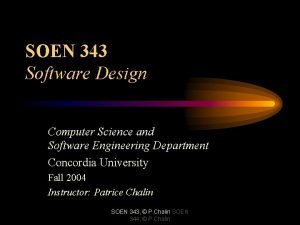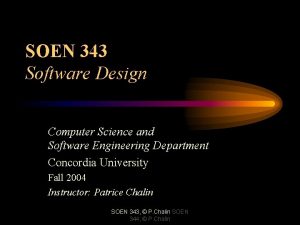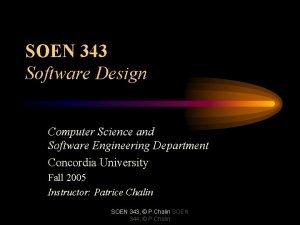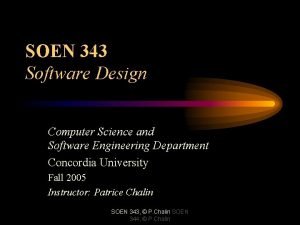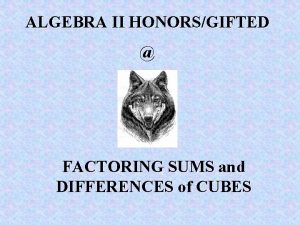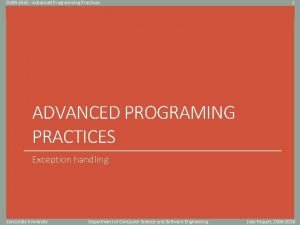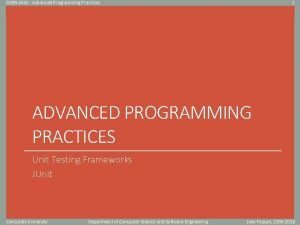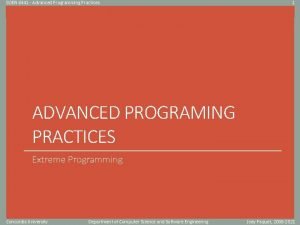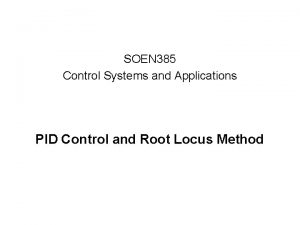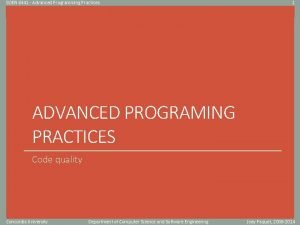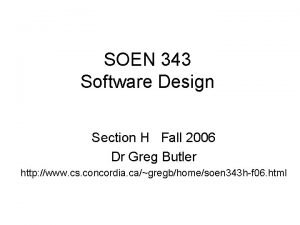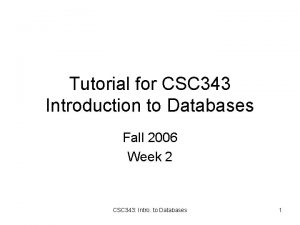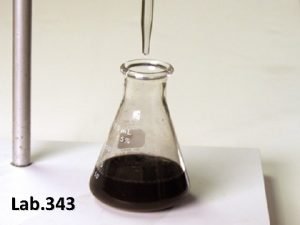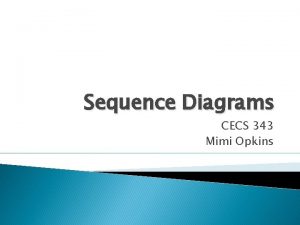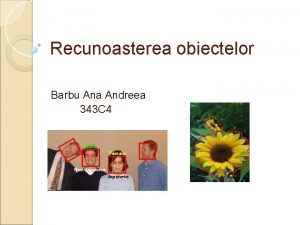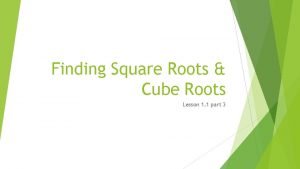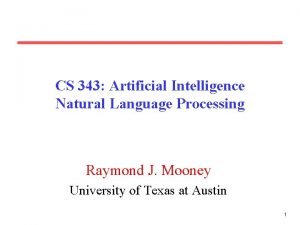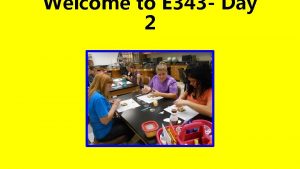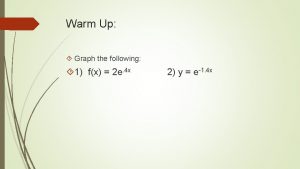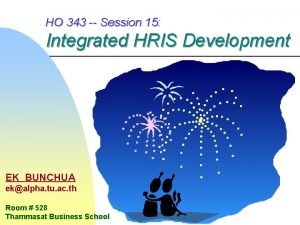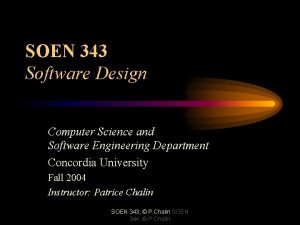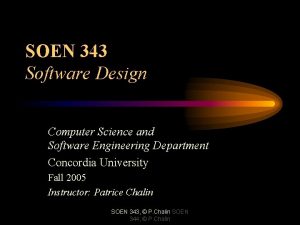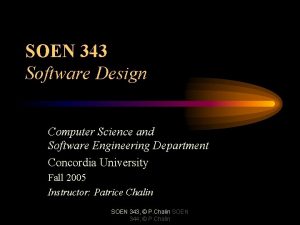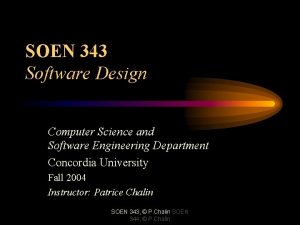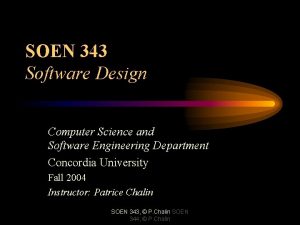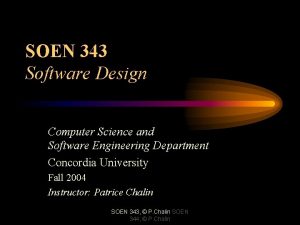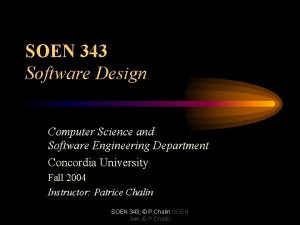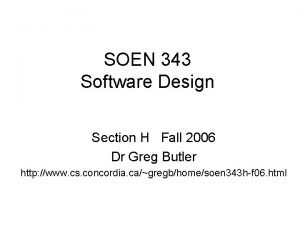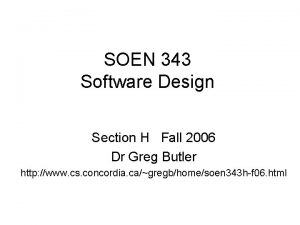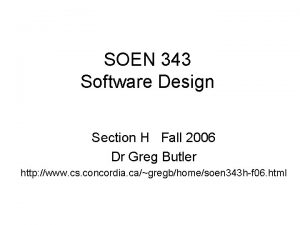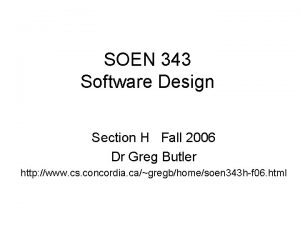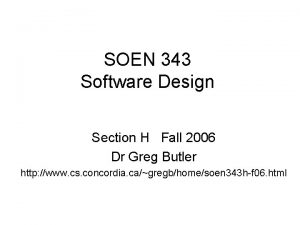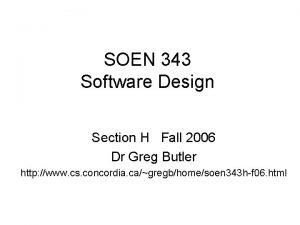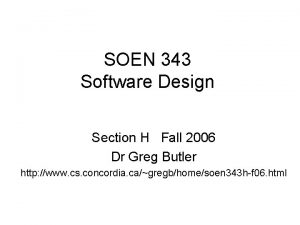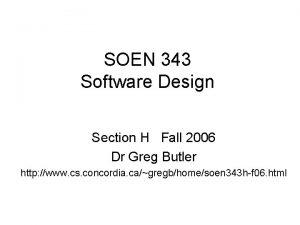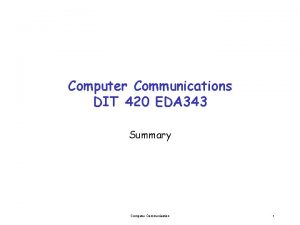SOEN 343 Software Design Computer Science and Software












![Stack and Heap Stack Heap i j a b [2, 1, 0] 3 s Stack and Heap Stack Heap i j a b [2, 1, 0] 3 s](https://slidetodoc.com/presentation_image_h2/179b3b34d05f3585530f0925c6d5453c/image-13.jpg)
![Stack and Heap: Exercise • Given the following declarations int int[] String i = Stack and Heap: Exercise • Given the following declarations int int[] String i =](https://slidetodoc.com/presentation_image_h2/179b3b34d05f3585530f0925c6d5453c/image-14.jpg)









- Slides: 23

SOEN 343 Software Design Computer Science and Software Engineering Department Concordia University Fall 2004 Instructor: Patrice Chalin SOEN 343, © P. Chalin SOEN 344, © P. Chalin

Agenda – Lecture 1 b • Review of Object-Oriented Programming (OOP) fundamentals. • Basic UML: a language for expressing designs. 12/18/2021 SOEN 343, © P. Chalin, 2

Reminders • Tutorial to be held in H-905. – You will have to buddy up … 12/18/2021 SOEN 343, © P. Chalin, 3

What is design? • Requirements vs. Design: what vs. how. • In design we create a system that will offer services to customers based on their statement of requirements. • Course: Object-oriented analysis and design. • Hence familiarity with OO programming is essential. 12/18/2021 SOEN 343, © P. Chalin, 4

Object-Oriented Programming 12/18/2021 SOEN 343, © P. Chalin, 5

OOP Reference • Program Development in Java: Abstraction, Specification, and Object-oriented Design by Liskov and Guttag. AW 2001. • Much of what follows is summarized from this book. 12/18/2021 SOEN 343, © P. Chalin, 6

Object-oriented languages: basic notions • • Basic notions: object, classes. Every object is an instance of a class. Most data is contained in objects. Objects contain both state and operations – Operations are called methods. • Objects interact by invoking methods. • Methods allow the objects state to be accessed and possibly changed. 12/18/2021 SOEN 343, © P. Chalin, 7

Objects • Have secrets – They can hide e. g. data or even algorithm details. • Offer services to other objects in its community. 12/18/2021 SOEN 343, © P. Chalin, 8

Java Programs • Consist of classes and interfaces. • A class can be used to – Hold collections of procedures (static methods), or – Define new data types. • Interfaces can also be used to define new types. 12/18/2021 SOEN 343, © P. Chalin, 9

Methods • Most of the text in a class or interface file will consists of method definitions. • Methods can accept parameters and return results. • Arguments are passed by “value”. 12/18/2021 SOEN 343, © P. Chalin, 10

Packages • TBC later. 12/18/2021 SOEN 343, © P. Chalin, 11

Objects and Variables • All data is access by means of variables. • Local variables (including method parameters) are allocated on the runtime stack. • Every variable has a declared type that is either – Primitive type (int, char). – Reference type (int [], String, any class type). • Variables of – Primitive types contain values. – Reference types contain references to objects that are stored in the system heap. 12/18/2021 SOEN 343, © P. Chalin, 12
![Stack and Heap Stack Heap i j a b 2 1 0 3 s Stack and Heap Stack Heap i j a b [2, 1, 0] 3 s](https://slidetodoc.com/presentation_image_h2/179b3b34d05f3585530f0925c6d5453c/image-13.jpg)
Stack and Heap Stack Heap i j a b [2, 1, 0] 3 s t 12/18/2021 SOEN 343, © P. Chalin, 13
![Stack and Heap Exercise Given the following declarations int int String i Stack and Heap: Exercise • Given the following declarations int int[] String i =](https://slidetodoc.com/presentation_image_h2/179b3b34d05f3585530f0925c6d5453c/image-14.jpg)
Stack and Heap: Exercise • Given the following declarations int int[] String i = j; a[] b = s = t = 6; = {1, 2, 3}; new int[2]; “abc”; null; • what will be the state of the stack and heap after they have all been processed? 12/18/2021 SOEN 343, © P. Chalin, 14

Stack and Heap Stack Heap i j a b s t 12/18/2021 SOEN 343, © P. Chalin, 15

Type Hierarchy • Every class is a subclass of Object. • If S is a subclass of T then we can use an instance of S where ever a T is expected: T t = new S(); Object o = new String(“abc”); 12/18/2021 SOEN 343, © P. Chalin, 16

Method Invocations & Field Access • static • non-static 12/18/2021 SOEN 343, © P. Chalin, 17

Static Methods & Fields • The method called depends on the declared type of the variable (not the run-time type of the referenced object). • Like a “global” procedure and/or variable. 12/18/2021 SOEN 343, © P. Chalin, 18

Class P – i. e. Parent class P { static int rate = 1; static String m 1() {return “P. m 1”} static String m 2() {. . . } String r 1() {… "P. r 1: “ + rate; } String r 2() { … } } 12/18/2021 SOEN 343, © P. Chalin, 19

Class C – i. e. Child class C extends P { static int rate = 2; static String m 1() {return “C. m 1”} String r 1() {… “C. r 1: "+rate; } } 12/18/2021 SOEN 343, © P. Chalin, 20

Main Class, part I P p = new C(); println(p. m 1()); println(p. m 2()); println(p. r 1()); println(p. r 2()); println(p. rate); 12/18/2021 SOEN 343, © P. Chalin, 21

Main Class, part II C c = new C(); println(c. m 1()); println(c. m 2()); println(c. r 1()); println(c. r 2()); println(c. rate); 12/18/2021 SOEN 343, © P. Chalin, 22

Dynamic Dispatching • Now consider String s = “abc”; Object o = s; … o. equals(s); 12/18/2021 SOEN 343, © P. Chalin, 23
 Soen 385
Soen 385 Soen 343
Soen 343 Soen 343
Soen 343 Soen 343
Soen 343 Texas health and safety code 343
Texas health and safety code 343 Special product formulas
Special product formulas Soen 6441
Soen 6441 Soen 6441
Soen 6441 Soen 6441
Soen 6441 Soen 385
Soen 385 Soen 6441
Soen 6441 Soen 342
Soen 342 As a child which subjects of science was your favourite
As a child which subjects of science was your favourite Csc 343
Csc 343 Log k = log a - ea/rt
Log k = log a - ea/rt Experiment 343
Experiment 343 Cecs 343
Cecs 343 Descompunerea lui 343
Descompunerea lui 343 Cube root of 64/343
Cube root of 64/343 Cs 343
Cs 343 343 day
343 day Log 343
Log 343 343 pro session
343 pro session 343 jesus
343 jesus
